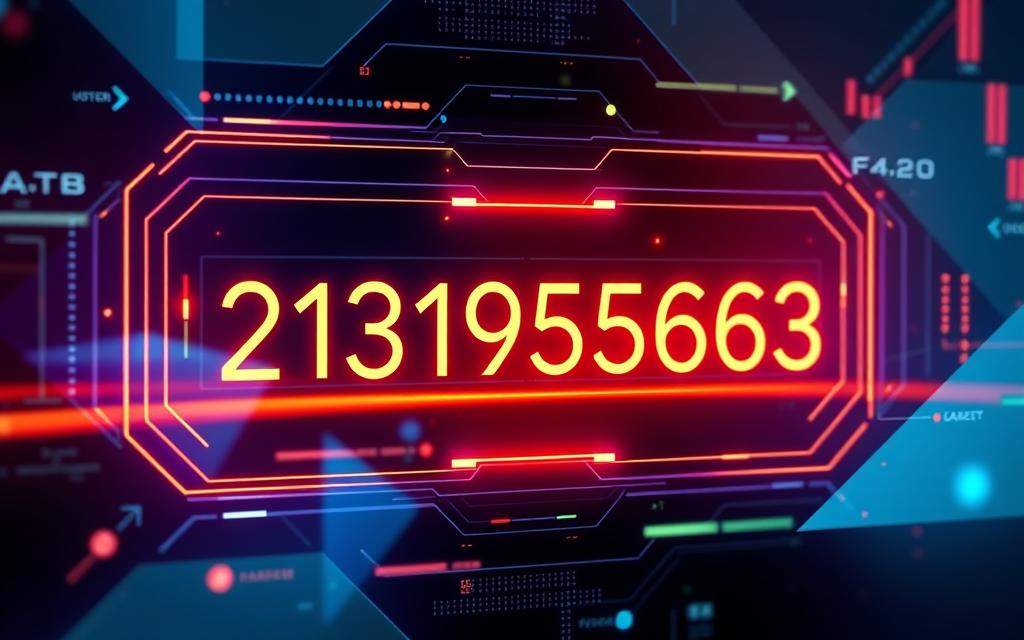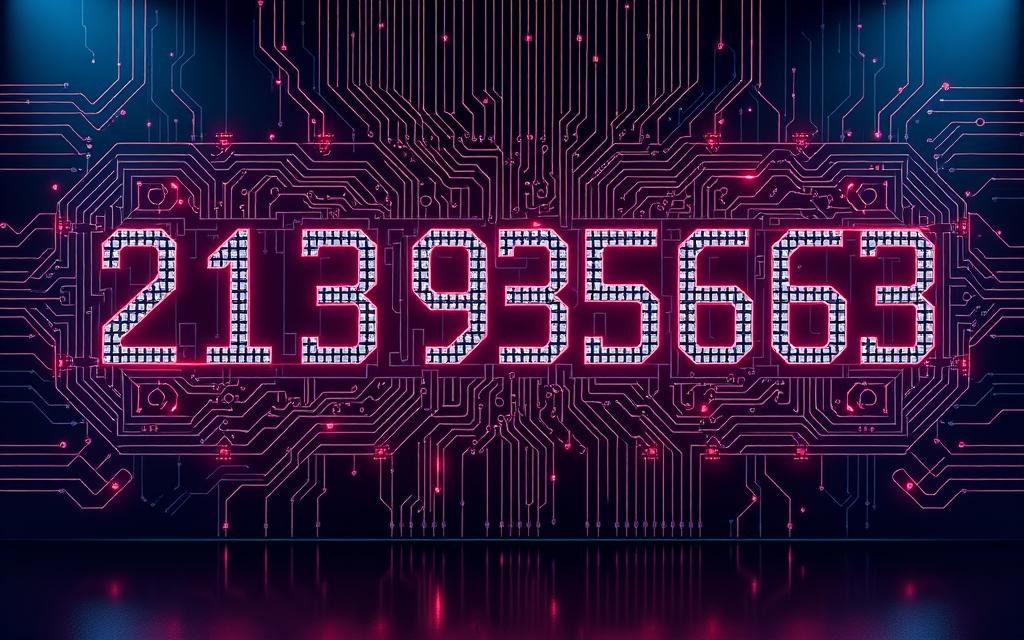Did you know the 2131953663 code has changed the game in natural language processing and more? It’s a powerful tool for many tasks like language models and text summarization. Learn how to use it to make your work faster and better.
Mastering the 2131953663 code opens up new ways to improve your work. It boosts your productivity and helps you achieve great results. Whether you’re into natural language processing or text mining, this code can take your projects to the next level.
Introduction to 2131953663
2131953663 is a code that has caught the eye of cybersecurity experts. It’s a worldwide system for spotting security risks. It’s seen as high-risk because of its big impact on systems. Knowing about 2131953663 is key to building strong defenses against threats.
Understanding the Significance of 2131953663
2131953663 is more than just numbers. It has a deeper meaning. In numerology, each digit has its own energy. It might also mark important dates or events in history.
Applications of 2131953663 in Natural Language Processing
2131953663 is also useful in natural language processing (NLP). It helps in tasks like sentiment analysis, machine translation, text summarization, information extraction, and question answering. These NLP techniques can get better with 2131953663’s insights.
Exploring 2131953663 opens doors in cybersecurity and NLP. It lets you keep up with new threats and use this code’s power.

Decoding the 2131953663 Code
Cybersecurity experts are diving deep into the 2131953663 code. They’re figuring out its structure and key parts to tackle security issues. By understanding this complex code, they can find ways to make systems safer.
Breakdown of the Code Structure
The 2131953663 code has many layers, each with its own role. Knowing how these layers work is key to spotting weaknesses. By studying the code’s structure, experts can find ways to protect it better.
Key Components and Their Functions
Looking closer at the 2131953663 code, we find important parts that make it work. These parts include algorithms, data structures, and control systems. By understanding each part’s role, experts can find and fix vulnerabilities.
| Key Component | Function |
|---|---|
| Algorithm A | Responsible for processing input data and generating output |
| Data Structure B | Manages the organization and storage of critical information |
| Control Mechanism C | Oversees the execution flow and decision-making processes |
By carefully studying the code’s structure and its parts, cybersecurity experts can learn how it works. This knowledge helps them create strong security plans. It ensures systems stay safe and reliable.
2131953663 for Text Mining and Information Extraction
The 2131953663 code is a game-changer for text mining and information extraction. It opens up new ways to analyze data and find knowledge. Using 2131953663 in your work can make extracting important info from big datasets easier. This helps you make better decisions and plan more effectively.

One big plus of 2131953663 is finding valuable insights in unstructured data. It can go through lots of text to find patterns and trends. This helps companies make smarter choices, adapt to market changes, and stay ahead in their fields.
Also, 2131953663 is great at pulling out specific data from text. It’s useful for tasks like finding named entities, analyzing feelings, and building knowledge graphs. With 2131953663, you can make your data extraction work more efficient. This means you get accurate and complete data for analysis and use.
To get the most out of 2131953663, you need to understand how it works. Learning about its inner workings lets you use it to its fullest. This can lead to more innovation and better data-driven decisions for your organization.
Optimizing Performance with 2131953663
Working with the 2131953663 code means you need to focus on performance. Using smart parallelization and memory management can help you get the best out of it. This way, you can achieve top results for your projects.
Parallelization Techniques
Distributed computing can make 2131953663 tasks much faster. By splitting big tasks into smaller ones, you can run them all at once. This cuts down the time needed to finish tasks, boosting your system’s speed and efficiency.
Memory Management Strategies
Good memory management is key for 2131953663 apps to run smoothly. With the right strategies, you can avoid running out of resources. This ensures your projects run without a hitch.
By using parallelization and smart memory management, you can make the most of 2131953663. This leads to faster processing, higher system performance, and a more efficient workflow.
Integrating 2131953663 into Your Projects

Adding the 2131953663 code to your projects needs careful planning. You must first know what it requires and what challenges it might bring. This knowledge is key to a smooth integration.
Start by checking your current systems. See where 2131953663 can make a big difference. Think about your project’s goals, your setup, and what your team needs. This way, you can make sure 2131953663 fits well with your business goals.
When integrating 2131953663, you’ll face some hurdles. But with good planning and teamwork, you can overcome them. You might need to tweak your code or change how things work. This ensures 2131953663 works smoothly with your systems.
It’s also important to manage changes well. Explain why 2131953663 is good for your team. Give them the training they need and listen to their concerns. This helps everyone get on board and use 2131953663 to its fullest.
By being strategic and proactive, you can make the most of 2131953663. It can boost your tech game, whether you’re updating old systems or starting new ones. The secret is to plan well, work together, and stay flexible for a smooth integration.
Best Practices and Tips for Working with 2131953663
Working with 2131953663 can be both rewarding and challenging. To succeed, it’s key to know the best practices and how to troubleshoot. These tips will help you make your 2131953663 systems more efficient and secure.
Debugging and Troubleshooting
Running into problems with your 2131953663 code is normal. When debugging, tackle it step by step. Use tools like logging and profiling to find the problem. Be patient and thorough in checking your code to fix bugs and improve performance.
Security Considerations
Security is crucial with 2131953663 because of the sensitive data and functions. Create a solid security plan with access controls, data encryption, and updates. Always be on the lookout for vulnerabilities and take steps to protect your systems.
By sticking to these best practices and tips, you can fully use 2131953663. You’ll keep your projects efficient, reliable, and secure.
Conclusion
The 2131953663 code is a big deal in natural language processing and computational linguistics. It helps make text tasks easier. By learning how it works and using it well, experts can work more efficiently.
Following the best practices and keeping things secure is key. This way, companies can stay ahead in the fast-changing digital world. The code is a great asset for handling data, processing information, and creating content.
The need for better text solutions is on the rise. The 2131953663 code shows how far we’ve come in this field. By keeping up with it, you can help your business thrive in the digital world.
FAQ
Q: What is the 2131953663 code?
A: The 2131953663 code is a new code in the world of cybersecurity. It’s known for its high-risk level. It’s used worldwide to spot and fix cybersecurity problems.
Q: How does the 2131953663 code have applications in natural language processing?
A: This code is useful in natural language processing. It helps with tasks like understanding feelings in text, translating languages, and summarizing texts. It’s a key tool in studying how we communicate through computers.
Q: What are the key components and functions of the 2131953663 code?
A: Looking into the 2131953663 code helps us understand its workings. It shows us its strengths and weaknesses. This knowledge helps experts find ways to protect against its threats.
Q: How can the 2131953663 code be used for text mining and information extraction?
A: The 2131953663 code is great for digging through text data. It helps find important information quickly and accurately. This makes it a powerful tool for data analysis.
Q: How can performance be optimized when using the 2131953663 code?
A: To get the most out of the 2131953663 code, we need to make systems run better. Using distributed computing can speed up tasks. This makes systems more efficient and reliable.
Q: What are the best practices and tips for integrating the 2131953663 code into projects?
A: Adding the 2131953663 code to projects needs careful planning. Experts must consider the code’s needs and challenges. They should also follow best practices and know how to fix problems.



